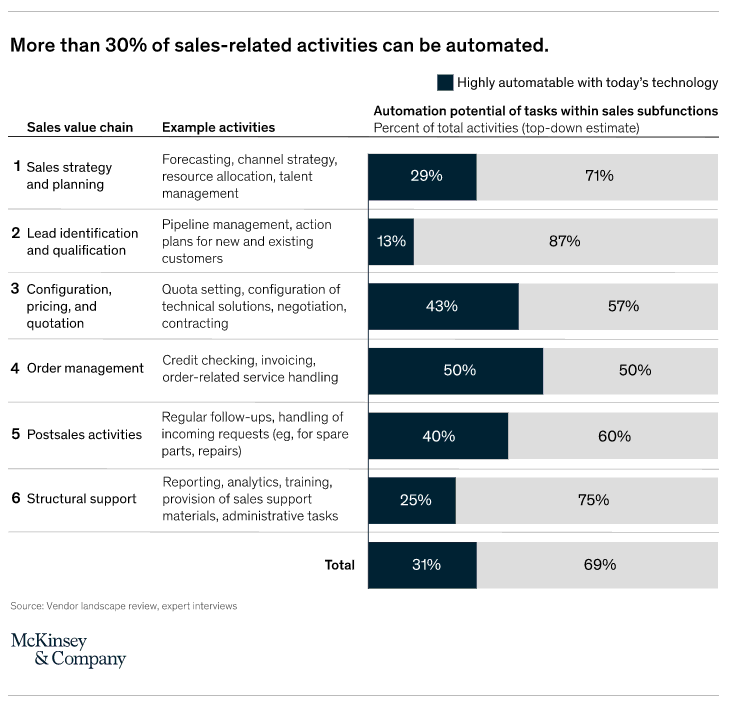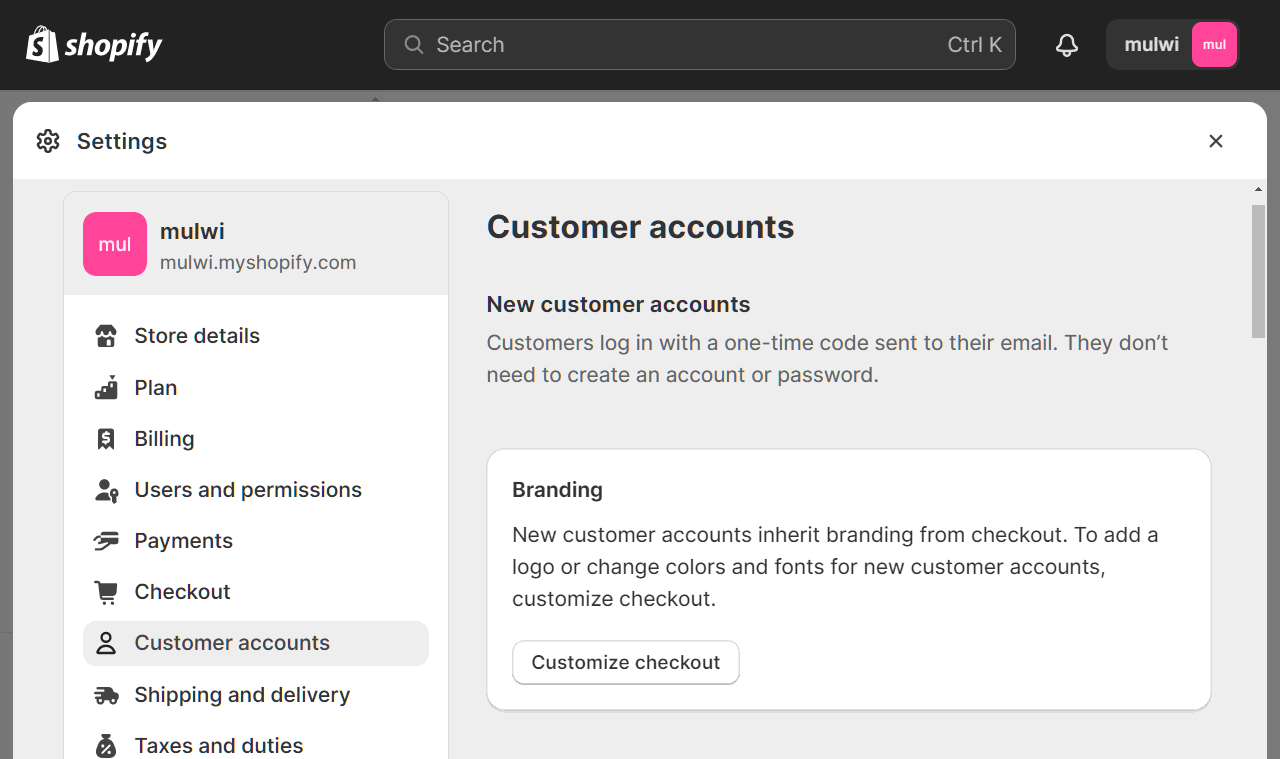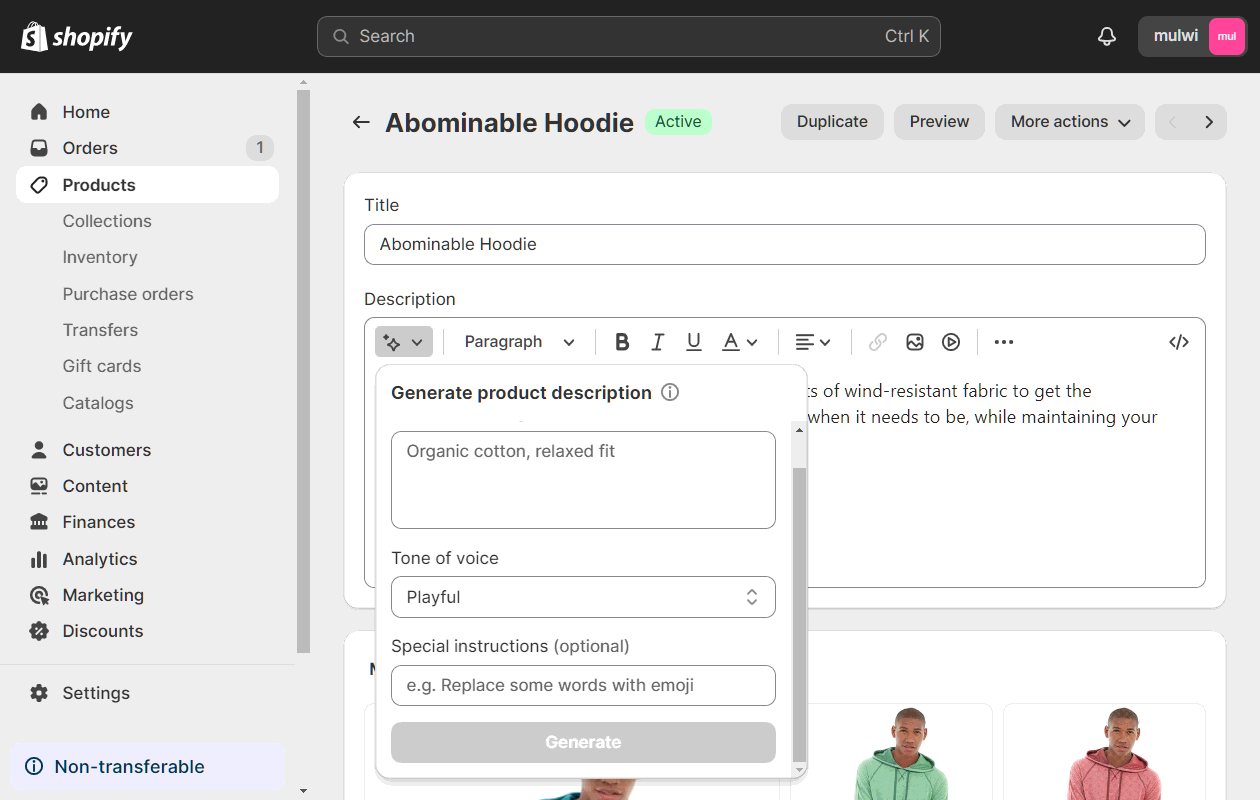Shopify is one of the most popular platforms for launching an online store, utilized by over 4.8 million stores with the USA, United Kingdom, Australia, Brazil and Germany being the top regions. In almost 20 years of Shopify’s existence, it has generated over $812 billion in sales. Out of the over 2.14 billion of online shoppers projected in 2024 almost 700 million people will buy from a Shopify-based store. The platform continues to actively develop, and here are its major recent updates that will significantly impact e-commerce in 2024 and you can use them to make your store more effective.
Automation to additionally free your time in 2024
Unlocking higher sales and revenue is the goal, and Shopify Flow is the key to streamlined automation. The good news? You no longer need Shopify Plus or Advanced plans – even Basic plans now have access to the expanded automation features introduced by Shopify in July.
Picture this: more free time, fewer mistakes, and an elevated customer service experience. That's what the new capabilities of Shopify Flow automation bring to the table.

Why bother with manual tasks when automated routines can potentially boost efficiency by up to 15% and increase sales by up to 10%, according to a McKinsey report? In fact, over 30% of sales-related tasks can now be automated.
Here's a quick rundown of tasks you can automate in your store:
- Schedule workflows at specific times and dates.
- Automatically publish/hide products on selected sales channels.
- New data fetch capabilities for:
- Summarizing unfulfilled orders.
- Segmenting shoppers based on their orders.
- Identifying out-of-stock products.
- Managing orders for prolific shoppers.
- Removing the “New” tag for a product.
- Checking for applied order discounts.
- Automate collaboration with affiliates and creators using Shopify Collabs:
- Automatically approve applicants.
- Export accepted creators to Klaviyo automatically.
- Send follow-up emails when a creator claims a gift.
- Congratulate creators and affiliates on their first sale.
- Simplify workflow debugging with Log output action, revealing variable values without running the workflow.
Shopify Flow's arsenal of automation features empowers merchants to automate routine tasks seamlessly. Consider these examples:
- Automated product publishing based on inventory levels.
- Automatic handling of paid orders through third-party services or internal notifications.
By embracing this higher level of automation, Shopify stores can enhance customer service and overall efficiency, minimizing the risk of human errors.
Make your Shopify store friendlier. Automatically
Imagine if your store could effortlessly activate a marketing tool that outperforms other promotion tools by generating 320% more revenue and increases shopper engagement with your brand by a whopping 33%. And, when armed with a tempting offer, this tool can boost revenue by up to 30%.
These remarkable results come from the often underestimated welcome emails. Unfortunately, many stores miss the mark by sending a basic welcome letter without a product or discount offer, or worse, skipping the welcome email altogether.
But hold on – Shopify stores can now tap into the full potential of welcome emails. Your store can automatically dispatch a finely tuned welcome letter, featuring:
- Your brand story with a discount
- A discount with a friendly reminder
Pair the impact of automated welcome emails with a set of new templates for thank you emails, and your store can effortlessly send gratitude in style. Thank you emails are often considered among the most crucial emails for an e-commerce business.
HubSpot discovered that their thank-you emails boasted a remarkable 42% open rate and a 14% click-through rate (CTR). This heightened engagement can set the stage for increased sales, as engaged customers are more likely to make purchases.
Ultimately, welcome and thank you emails play a pivotal role in boosting sales by enhancing customer engagement and loyalty. Embrace automation for your Shopify store's welcome and thank you emails in 2024 to seize the opportunity to optimize efficiency, strengthen customer relations, and fuel business growth.
Your store can now search for shoppers on Pinterest
Did you know that Pinterest users outspend shoppers on other platforms by a whopping 40%? It's true – over 90% of weekly Pinners end up buying products on Pinterest.

Now, the game has changed for Shopify stores looking to sell on Pinterest. In 2024, rather than just launching product listings and crossing fingers, a Shopify store can smartly collect and deliver a list of potential buyers on Pinterest, allowing for more precise targeting.
This new opportunity stems from the expanded Shopify Audiences feature. It can whip up lists of potential buyers from the United States and Canada who are likely to hit that 'Buy' button on your store. And guess what? You can target these users with ads.
The Shopify Audience goes on a hunt for three types of Pinners:
- Retargeting Boost: Those who haven't purchased from you yet.
- Prospecting: People who share a similar profile to your existing shoppers.
- Pinterest Lookalike: A list cooked up by Pinterest, featuring people who behave like your current audience.
But hold on, there's more! The Shopify Audience feature isn't limited to Pinterest – it also plays well with Meta (Facebook), Google, Tik-Tok, and Snapchat. Give it a shot to crank up the effectiveness of your ads on these platforms.
Customer accounts without passwords
Shopify has a nifty solution for the age-old headache of mandatory account creation. You know, that moment when a store insists you create an account just to buy something? Well, turns out, it's a big turn-off for potential customers. According to Shopify, 24% of people bounce off their online shopping cart because the store pushed them to create an account. And guess what? Saleslion backs this up, revealing that 23% of users will bail on their shopping cart if creating a new user account is in the deal.
Here's the hassle: Traditional account setups make customers jump through hoops, filling in unnecessary details like birthdays and phone numbers – stuff you really don't need for a simple purchase. And let's not forget the pain of having to remember yet another password for yet another account.

Enter Shopify's game-changer – a fresh breed of accounts. Now, all shoppers have to do is make a purchase, and voila, they automatically snag an account. No more unnecessary details, and definitely no more password headaches. Later, when they want to log in, a one-time code dances into their email inbox, making it a breeze.
Win customer loyalty by controlling regional visibility for products
Localization isn't just a buzzword – it's a potential sales booster, with some cases showing a whopping 40% to 50% increase. Why? Because customers prefer to shop from brands that feel local.
Brands are catching on, too. Around 43% of them are making efforts to showcase inventory available locally to meet customer expectations.
Now, if you're running your shop on Shopify, the game gets even better. Enter the Shopify Markets feature, giving you the power to display products available in specific regions. And the best part? You get to decide what products show up where.

By using this feature, Shopify merchants can ensure potential shoppers only see the goods that are right in their local ballpark. And according to research, offering products tailored to a local audience plays a crucial role in winning customer loyalty.
Localize your product pages URLs
Localization has some impressive stats in its corner – think a 47% surge in search traffic, a whopping 70% boost in website visits, and a cool 20% uptick in conversion rates, as per stats. And a chunk of this success story can be credited to something as simple as localized URLs.
Your page URL is like the first handshake between your store and a user or search engine. It's that initial impression, and that's why localizing your URLs matters. Thanks to Shopify's Translate & Adapt app, merchants can now effortlessly give their product page URLs a local flavor. And it's not just about products – now you can also translate URLs for collections and blog articles, making your entire store vibe more locally-connected.
Leverage the power of Artificial Intelligence for your product descriptions
If you're on the hunt for a sales boost, don't overlook your product descriptions. For a whopping 87% of customers, product descriptions are a deal-breaker when deciding to buy. Roughly 30% of potential buyers drop off due to lackluster product descriptions, and a staggering 64% end up returning a purchase because the description was off the mark.
Enter the Shopify Magic feature – your ticket to informative and well-crafted product descriptions in mere seconds. How does it work? It taps into the magic of Artificial Intelligence (AI), cooking up text based on the key details you feed it about your product.

Play around with your prompts to the AI to experiment with writing tone and style – find the product description format that vibes best with your store.
But wait, there's more! Extend the power of Shopify Magic to create top-notch emails. Let it whip up email subject lines and pinpoint the prime time to hit send.
As of now, Shopify Magic works its charm in English, German, Spanish, French, Italian, Japanese, Portuguese (Brazilian), and Chinese (Simplified).
Utilize Smart Order Routing feature to deliver orders faster
When you're juggling multiple warehouses, the decision of which one to use for fulfilling an order becomes a make-or-break choice. It's a call that ripples through your order delivery, revenue, and, most importantly, customer satisfaction.
But guess what? Shopify stores can now take this weight off your shoulders by automatically picking the best warehouse for the job. How? Just set up a bunch of rules, and let the store do the rest.

Take the Smart Order Routing feature, for instance. You can configure it to ship orders from the closest warehouse, or maybe go for one in the same market as the delivery address – the choice is yours.
Why bother? Because automated warehouse selection is your ticket to reducing shipping delays, cutting down on shipping costs, speeding up order delivery, easing the load of manual order fulfillment, and, in the grand scheme, cranking up that customer satisfaction dial.
Enhance in-store search with color and images as search filters
About 43% of retail customers kick off their store exploration right from the search bar. And get this, nearly 30% of visitors are hitting up that in-site search feature. Here's the kicker – those who use it boast a conversion rate that's 1.8 times higher than the non-searchers.
Good news for Shopify users – now you can supercharge your in-site search game. How? By letting shoppers hunt down their desired products with even less hassle. Shopify has rolled out support for colors and images as search filters. And it's not just on search pages – these nifty filters are also up for grabs on collections.
Don’t let your checkout return to Shopify’s default design
Optimizing your checkout process isn't just a good idea – it can amp up your conversions by a solid 35.62%. What does optimization involve? Think clear call-to-action buttons, spot-on product recommendations, and a sleek, speedy checkout process.
For stores rocking the Shopify Plus plan, the checkout game gets even better. Customizing your checkout theme becomes a breeze. But here's the catch – Shopify is waving goodbye to the trusty checkout.liquid file. As of August 13, 2024, it's officially retired. Any checkout pages you've jazzed up using this file will revert to the default Shopify Checkout design. And oh, heads up – the same fate awaits modifications for thank you and order status pages starting August 28, 2025.
A 2024 tip: dive into the B2B digital market
If your store is on the B2B Shopify train, it's time to unlock an extra revenue stream. How? Start selling digital products to your wholesale clients.
The digital market, packed with digital products, is a goldmine. The sector's worth soared to $731.13 billion in 2022, and guess what? It's set to keep booming with a 26.7% growth rate (CAGR) from 2023 to 2030.
Shopify, initially more geared towards physical goods on its B2B platform, has leveled up. Now, it's all systems go for selling digital products to B2B customers.
Summary
As we step into 2024, Shopify, a global giant hosting over 4.8 million online stores, is gearing up to leave its mark on e-commerce. With a slew of updates, Shopify aims to supercharge online businesses.
The spotlight is on automating daily store tasks, giving entrepreneurs more time to focus on growth. That's not all – Pinterest gets a boost with targeted shopper outreach, customer accounts go password-free, and product customization gets a regional visibility upgrade.
But wait, there's more in the impactful features lineup: AI steps in to spruce up product descriptions, Smart Order Routing kicks in for more efficient deliveries, and in-store searches now flaunt color and image filters, making it a breeze for customers to spot their desired products.
With this evolving toolkit, Shopify is set to shape the future of e-commerce. These additions not only promise increased sales but also aim to elevate customer satisfaction for online stores.




